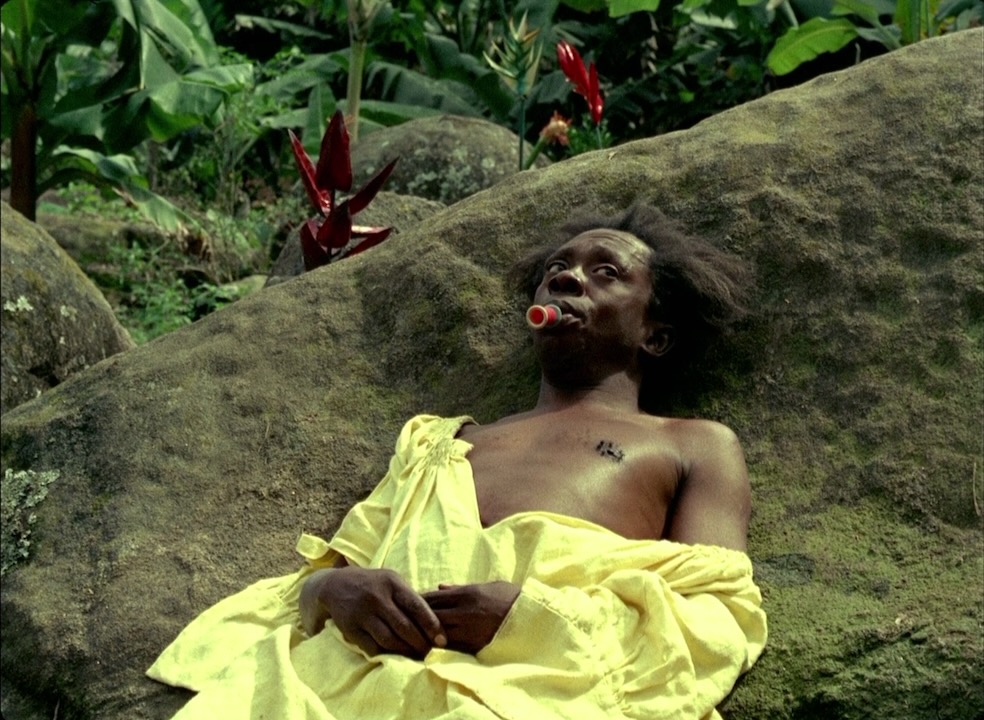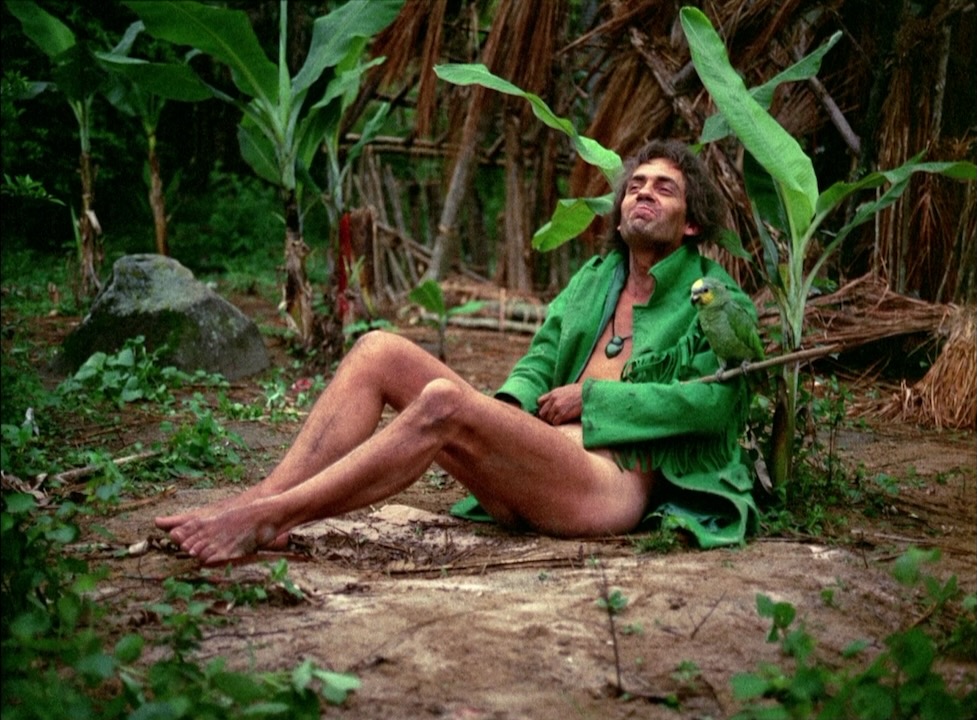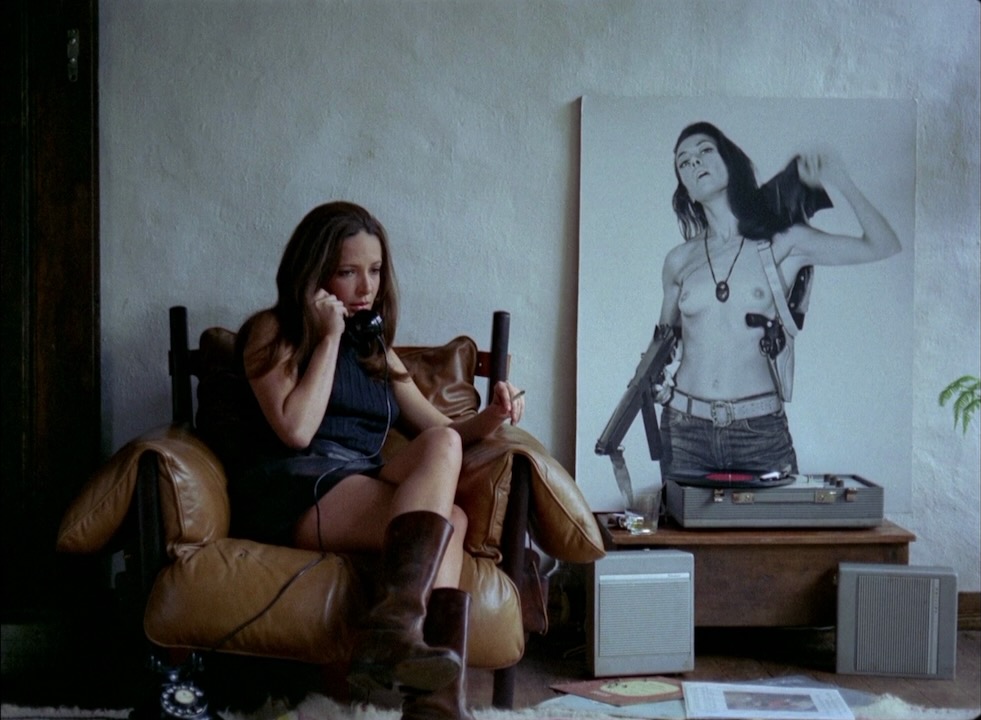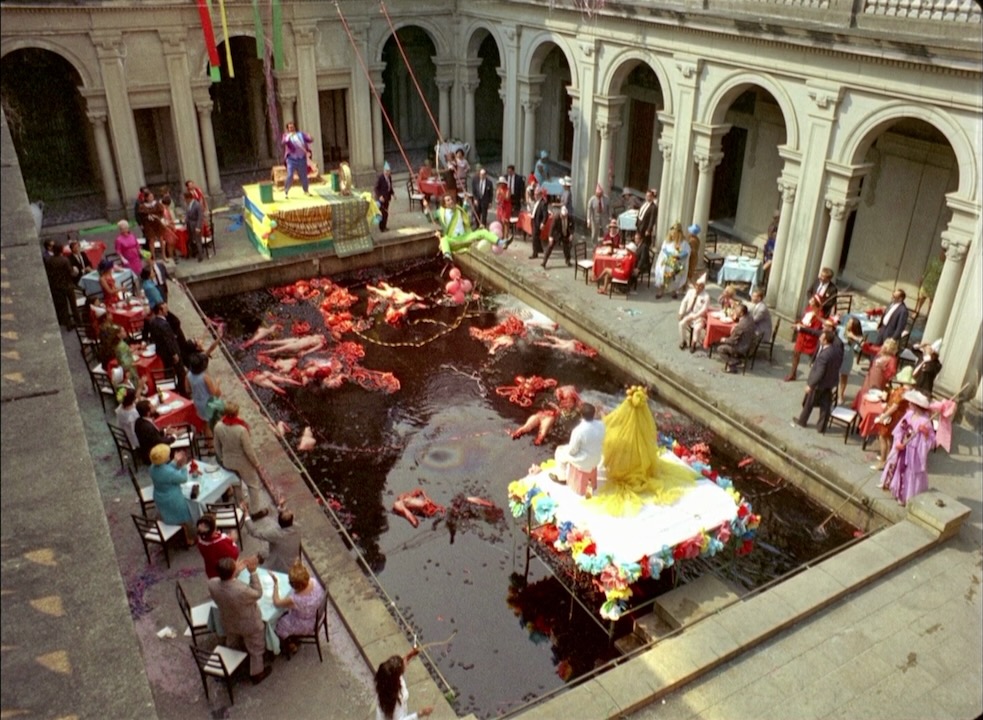Flowers Blooming in Our Throats (2020, Eva Giolo)
Nice sound design in an a/g short, how rare. Sync sound effects, professionally blended between shots. Focus on hands and arms… slapping and clutching, spinning tops, clipping flowers, with and without a red filter. I take the film as an ASMR parody, with its hair-brushing and rubberband-snapping, edited too quickly to evoke whatever trance state the youtubers seek.

–
Please Speak Continuously and Describe Your Experiences as They Come to You (2019, Brandon Cronenberg)
“Eventually I realize I’m in a kind of hell.” Deragh is a brain-implant patient describing the dream states the device puts her in. Three dreams under different color filters, then a good ol’ glitching-video-signal nude freakout before the Twilight Zone ending.

–
Tomb of Kafka (2022, Jean-Claude Rousseau)
Prague. A small room. The desk has a hat on it. One of the windows is green. Usually there’s a white-haired man without anything compelling to do. His activities have equal weight as the quick fadeouts or fidgets of the camera refocusing. Sometimes a cutaway to a forest or a dead bug. We watch the man read for a minute or two. Hey, I could be reading. Didn’t I get a new Laszlo Krasznahorkai book? I could’ve been reading that.

–
Dear Chantal (2021, Nicolas Pereda)
Chantal is renting a place from the narrator’s sister, a painter. He’s an Akermaniac so asks to be in charge of communication, which we hear as flatly-narrated letters. Nice shot of brushing leaves from a skylight. Opens and closes with the quote: “Letters never written nonetheless exist.”
–
Blank Narcissus (2022, Peter Strickland)
A “rediscovered” Midsummer Night’s Gay Porno with audio commentary by a director mourning his long-lost relationship with the star. Maybe Strickland isn’t as great as I’d been assuming.
–
Open Sky, Open Sea, Open Ground (2022, Baus & Gills)
Ecuador… Grainy film with a wrecked water/shuffle soundtrack of people running across a beach from boat to truck, delivering containers of fish while besieged by pelicans and gulls. I was rooting for the pelicans.

–
Emergence Collapse (2021, Rainer Kohlberger & Jung An Tagen)
Liquid cityscapes! Best guess is it’s nighttime photography turned into pure digital moosh with the color dial turned to eleven. Some of the most tripped-out shit I’ve ever seen. Loses a point for the nightmarish music, sort of a generative-autechre.

–
Mnemonics of Shape and Reason (2021, Sky Hopinka)
Wow, a convincing and succinct blend of earth, sky and water. Images upside-rightside overlapping, the sky masked by a person-walking silhouette, desert and plants blurred into blasted lines as if viewed out a rocket-car window.

–
Mélodie de brumes à Paris (1985, Julius-Amédé Laou)
The only short I watched from the free offerings of Prismatic Ground, which was like most film festivals in not having very clear communication about its streaming program.
Opens on a dubbed guy having a breakdown out the window of an artificial-looking apartment, yelling at neighbors and passers-by to blow up the buildings of the oppressors (start with the bars, banks and pay toilets). He mutters himself to sleep on the can, the synth soundtrack alternating with a pop song repeating the film’s title. In the morning he walks through the fog to a bar, his thoughts still on bombs, is the only customer but still can’t get served (because of racism, not because they heard him advocating for the violent destruction of all bars). He finds his dead father and confesses to being a merciless killing machine during the Algerian war. That night he’s being harassed by a drug dealer when a white doorman starts being racist, the director yells cut but the doorman doesn’t stop, and the cast and crew start fighting with the white locals.
Good looking movie with nice fourth-wall-breaking and synth music. I do think a few of the voiceover lines were clunky (guy is haunted by the past, we know because he says “the past, the past”). Star Greg Germain also appeared in the similarly themed Soleil O and popped up in everything from Chabrol movies to Emmanuelle sequels.


–
Fatty and Mabel Adrift (1916, Roscoe Arbuckle)
Farmhand Roscoe marries Mabel and they move into a cottage her parents buy when a shady realtor’s car breaks down outside their house. R&M sleep as far apart as possible inside, while outside his romantic rival the Hated Milk Machine conspires with some random thugs to … push their house into the ocean? Or it happens to slide away during a storm while HMM and the thugs are attempting to break in. Either way, they don’t become adrift until the last 7 minutes. The cops and parents somehow save them, meanwhile HMM and the thugs gamble all night, argue over the wad of cash, then all die in an accidental explosion. I know that watching silents while listening to Zorn is a cliche with me, but Cleric playing Bagatelles vol. 12 was perfect for this.

Mabel’s parents with villain Al St. John as the HMM:











































